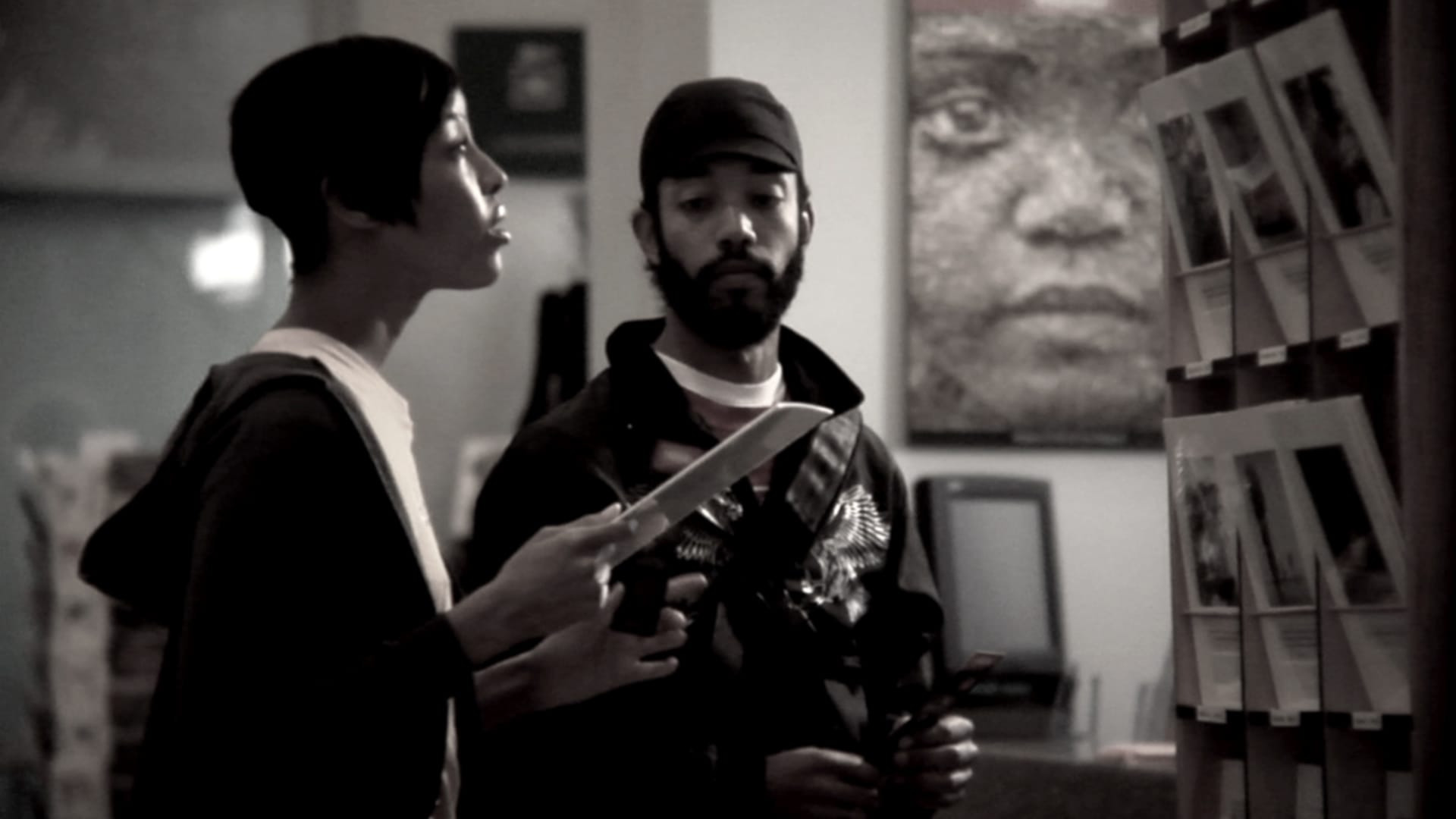RELATED ARTICLE
Medicine for Melancholy: Love in a Hopeless Place

Share
“I hate this city, but I love this city,” Micah tells Jo’ while making her a cup of tea. The pair are together in Micah’s studio apartment in San Francisco’s Tenderloin neighborhood. The night before, they were strangers hooking up at a party held in an enormous loft perched in the hills, with glass curtain walls and a long staircase. Micah’s home is much smaller: a bed, three bikes, and an extra-large aquarium fit snugly in a single room. Adorning his wall is a work of contemporary art that critically incorporates an official declaration sanctioning the urban renewal of the Fillmore District, once a thriving center of Black cultural life.
In Barry Jenkins’s 2008 debut feature, Medicine for Melancholy, San Francisco emerges alongside the two protagonists as a third main character: aloof, beautiful, giving and taking in equal measure. Jo’ (Tracey Heggins) and Micah (Wyatt Cenac) are twentysomething Black bohemians who are both involved in the predominantly white indie scene. They get to know each other as they traverse the city, taking in its landscapes, parks, art museums, and cafés. They bike around; they walk and talk. They debate the city, too, discussing the housing policies that shut out poor and working-class residents, the erasure of Black urban life, and the disappearance of havens of refuge and possibility for artists.
Though nowadays we associate Jenkins’s cinema with exuberant, opulent beauty—the lush flora and sparkling seawater of his Oscar-winning masterpiece, Moonlight (2016); the sensual textures and acrylic hues of his adaptation of James Baldwin’s novel If Beale Street Could Talk (2018)—Medicine for Melancholy explores its urban setting in a decidedly subdued fashion. Here, Jenkins employs color not as embellishment but as absence. Except for occasional bursts of sunlight, most of the film’s imagery is awash in blacks and grays. Shadows darken every frame. Occasionally, muted mauves and somber sepias peek through the quiet cityscape. But even with a limited palette, the film achieves a beauty all its own.








